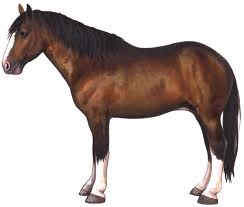Horse
| This article or section is being fought over by people undoing each other's changes. Please use the Discussion page for fighting instead of the article. |

Horses are large mammals used extensively in history and fantasy to haul shit around, and later to to let warriors hit faster and harder. If you desperately need more information on horses, check out Encyclopedia Britannica or that other wiki.
In Traditional Games
Role-playing games set in the typical vaguely-medieval-European setting will invariably have horses (or some other setting-appropriate mount, like giant lizards or camels) available to speed travel and increase load capacity between locations. Certain classes, like knights, may have skills to use their horse in combat for increased speed and attack power. Caring for a horse is extremely complicated, to the point that real-world knights and horse-owning nobles had servants specifically tasked with managing the horse; they need to be fed, groomed, and fitted with equipment like horseshoes, saddles, and reins to operate at peak efficiency, and they are not as adaptable to terrain or as capable of sustaining a heavy pace as a human. Most role-players are more interested in crawling through dungeons than playing "Horse Stable Manager 1500", so the needs and capabilities of horses are usually kept well abstracted.
Greek mythology also includes legends of centaurs, creatures which consist of a man's upper body connected to a horse body at the shoulder (the horse-body's shoulder); naturally, role-playing games include them as monsters or player-character races.
The ancient Greeks believed that in far off lands there was a head horned creature called a unicorn, which coincided with a critter that was described in the old testament. Given the context of what they were talking about these were probably Indian Rhinos, but this did not stop European artists to imagine these creatures as being like Horses with horns based off Narwhal Tusks. Since the classical depiction of unicorn was a huge horse with a long sharp horn coming out of it's forehead which it could use to impale people with, in the middle ages the unicorn was a symbol of masculinity. Times have changed. Or did they...?